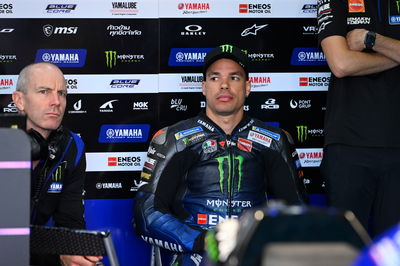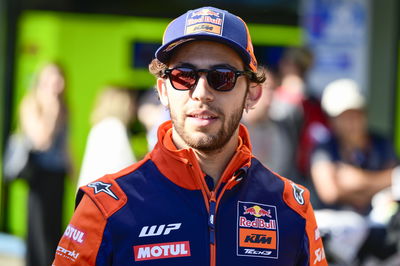‘Impossible’ MotoGP doesn’t have ‘democratic’ combined weight
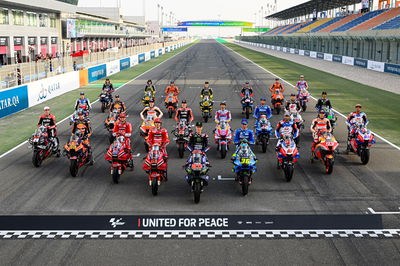
The issue of combined weight in MotoGP is a long-running debate, with physically larger riders feeling they are unfairly penalised.
Past pleas by the likes of Scott Redding (78kg/185cm) and Danilo Petrucci (80kg/181cm) fell on deaf ears, with the counter-argument being that - while a combined weight is appropriate in classes with less power - the advantages and disadvantages are more balanced on a 300hp MotoGP machine.
Luca Marini, who at 69kg/184cm is one of the bigger riders on the present MotoGP grid, doesn’t agree. But it’s not pure acceleration where he feels most penalised, but the amount of tyre ‘stress’ and ‘energy’ needed to produce that acceleration.
The Italian, who previously raced under the combined 217kg rider and bike limit in Moto2, said:
“There is a minimum [combined] weight in Moto2 and I was over the limit, but [only] like 4kg. And it's OK if between me and other rider there is 4kg.
“It's more difficult in MotoGP. I’m trying to be more strict with my training and with my diet, because there is no [combined] minimum weight so there are also differences like 10kg between me and another Ducati rider.
“And this, even if we have a lot of power, changes a lot the behaviour of the bike and also how you stress the tyres.
“Because in a lot of tracks, we feel and we analyse that I stress more the tyres because with more kilos you need to put more energy in the tyre to accelerate in the same way.
“It's not something that you lose acceleration; the acceleration, also in the data, is the same. But the energy that you put into the tyre is more. So you need to be very careful with the rear tyre, especially because you don't want to use it so much.
"And at the beginning of the season I remember that many races I finished the rear tyre [grip] and it's something that we worked a lot on and now we are really competitive and I'm one of the guys that uses less the rear tyre.
“This is a very good, like in Phillip Island I was managing very well.”
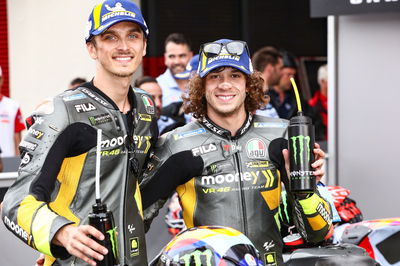
'Impossible' that they didn't bring a combined weight into MotoGP
Nonetheless, the VR46 Ducati rider is adamant MotoGP needs to join the smaller grand prix classes in introducing a combined weight.
“It’s something that is impossible that they didn't bring to MotoGP before. I don't know why. It’s something really democratic, I think,” Marini said. “Why does a heavy rider need to be penalised for something that is just his nature? It’s something with no sense in my opinion.”
When Dani Pedrosa (51kg/160cm) was racing, the argument against a minimum weight was that the Spaniard already suffered in terms of being unable to move his (limited) body weight around and loading his bike with ballast would make it even harder for him to handle.
But Pedrosa was an extreme example and with Marini’s team-mate Marco Bezzecchi (61kg) listed as lightest on this year’s grid, the smaller riders would only need minimal ballast to meet a combined weight or - Marini suggests - be able to bulk up on muscle.
“I think that it will be better for everybody to have a minimum weight, also for the other [smaller] riders because maybe they can train more. They can put more weight, they can build more muscle,” Marini said.
“So also the smallest rider can have an advantage [from a combined weight] in my opinion.”
But changes to the technical rules require unanimous agreement from the manufacturers, at least some of whom don’t like the idea of running their machines with different weights, due to the need for ballast to reach the combined weight with lighter riders.
“The manufacturers don’t want to put [ballast]. They want to keep going like [now] and [not think about] if they have a small rider in which place they need to put the [ballast] because maybe this can affect the behaviour of the bike.
“I think [a combined weight] is something that needs to come from IRTA, from Dorna, not from the manufacturers.”
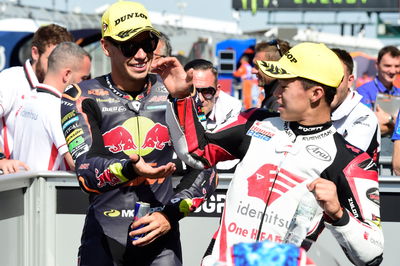
Fernandez: In Moto2, sometimes my dinners were not enough!
Does a combined weight actually work?
Although larger riders still have to count every calorie in Moto2, the last two world champions - Remy Gardner (72kg/178cm) and Augusto Fernandez (68kg/181cm) - have been bigger than almost all of the MotoGP grid.
But in a sign that the combined weight 'balance' is about right, much lighter riders have also remained competitive in the intermediate class, with Raul Fernandez (63kg/177cm) and then Ai Ogura (56kg/168cm) taking the Moto2 title fight to the final round.
However, in MotoGP Gardner then often spoke of straight-line performance issues during his single season on an RC16 and Fernandez, taking his Tech3 place as the only rookie joining the MotoGP grid in 2023, knows his weight is likely to rise as he builds the required muscle.
“Yeah, I will eat a little bit more than in Moto2. Not a lot. I don’t want to put much more weight on because I'm quite tall, but just to not be hungry, because in Moto2 sometimes my dinners were not enough!” he revealed.
“So now just have a healthy diet and be strong enough for the MotoGP bike, because I will need to be stronger.
“I’ll go to the Red Bull Athlete Performance Center in Austria in mid-January to check everything.”
- Moto3 combined minimum weight (motorcycle + rider) = 152 kg
- Moto2 combined minimum weight (motorcycle + rider) = 217 kg
- MotoGP minimum weight (motorcycle) = 157kg
The 2022 MotoGP rider weight/height statistics as provided by MotoGP.com can be seen below:
Remy Gardner 72kg/178cm
Alex Rins 72kg/176cm
Takaaki Nakagami 70kg/175cm
Luca Marini 69kg/184cm
Joan Mir 69kg / 181cm
Fabio di Giannantonio 68kg/175cm
Andrea Dovizioso 68kg/165cm
Francesco Bagnaia 67kg/176cm
Johann Zarco 67kg/171cm
Aleix Espargaro 66kg/180cm
Fabio Quartararo 66kg/177cm
Cal Crutchlow 66kg/170cm
Alex Marquez 65kg/179cm
Marc Marquez 65kg/169cm
Franco Morbidelli 64kg/176cm
Jack Miller 64kg/173cm
Maverick Vinales 64kg/171cm
Miguel Oliveira 64kg/170cm
Enea Bastianini 64kg/168cm
Raul Fernandez 63kg/177cm
Darryn Binder 63kg/175cm
Pol Espargaro 63kg/171cm
Brad Binder 63kg/170cm
Jorge Martin 62kg/168cm
Marco Bezzecchi 61kg /174cm
Average 63.4kg
